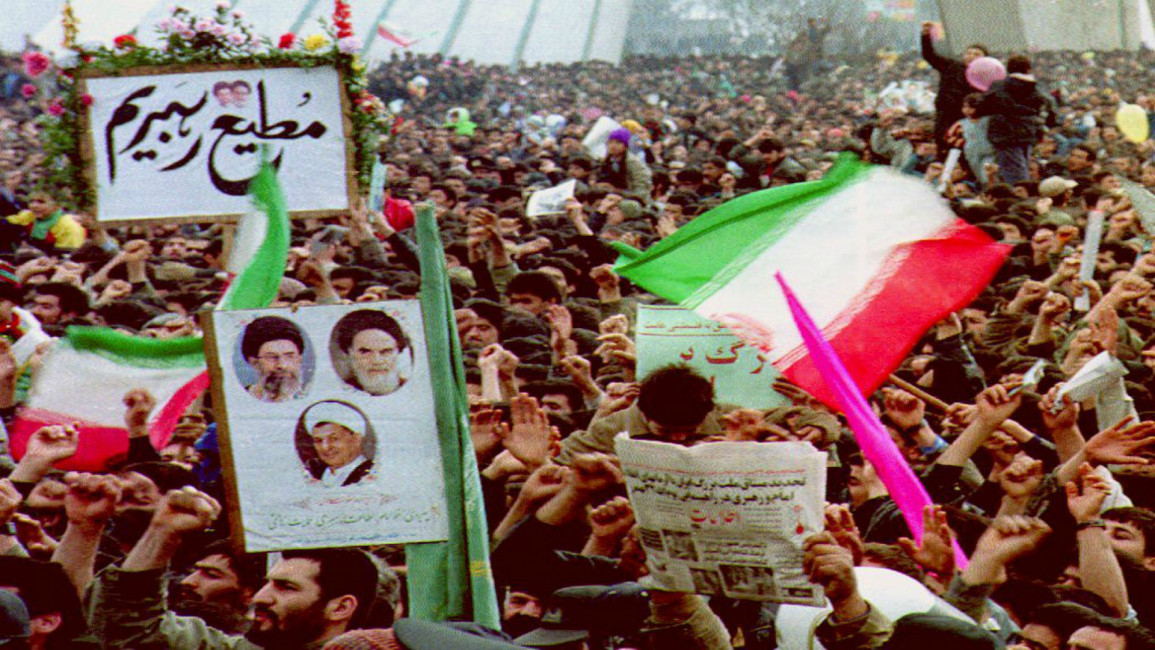
A portrait of Iran's incomplete revolution
In mid-september 2009, Nahid Kheirabi, a long-standing Marxist activist and journalist, was visiting Paris on a short trip from Tehran, when she came across Fatemeh Saidi, her cellmate from the Shah's prison.
Known as Mother Shaygan, Saidi's four children had been killed under the Shah. They were meeting each other in the French capital for the first time in four decades in the spirit of solidarity with the turbulent aftermath of the 2009 Iranian elections.
The cellmates belonged to the popular Iranian Marxist trend at the time. They both spent time in solitary confinement and underwent physical and mental torture. They were detained in the Savak's notorious detention centre, the "Anti Vandalism Joint Committee facility" in the 1970s, and then moved to country's first women's political prison: Ghasr prison.
 |
I wanted to explode myself with my only live grenade, but I suddenly noticed the family of the driver in the car |  |
Unlike the women portrayed in Dadeh Bidad, a collection of memoirs of other women political prisoners, the story of these two cellmates more closely reflects Marxism will give health to the sick, the final work of Mexican painter Frida Kahlo.
How so? These two women were not mere passive spectators, but reflected something more profound. They did not adhere to the idea of "The New World Order", but became active participants in a struggle that, for them, had never ended.
The two women did not have the same youthful features as before their time behind bars, but their passion remained burning. Nahid, in her journey as one of the pioneers of the Institute for the Intellectual Development of Children, had become an independent journalist, living in Iran, while Mother Shayegan left her homeland soon after the crackdown on revolutionary forces following the "Revolution".
"While I was trying to escape from the landlord who was cooperating with Savak, I was arrested by [an agent driving] a car I later noticed belonged to the Savak's agents. I wanted to explode myself with my only live grenade, but I suddenly noticed the family of the driver in the car. Having seen the child in the mother's arms I controlled myself and changed my mind," said Shaygan.
"I took my suicide pills."
In the response to the skewed report by Iran's security service on the story of her fallen children, Mother Shaygan mentioned the moment of her arrest. Savak's torturers, infamous men. were replaced with new interrogators, all of whom were known as "Haji Aqa".
Years after those bouts of torture, Nahid Kheirabi appeared in a small role, which has been censored, in a movie named Women's Prison. She relives the moments of that experience in the 1970s through method acting, having taught the Stanislavski method.
Yet Iran's "moderate" papers don't tolerate the company of this kind of independent journalist anymore, while a fresh wave of anti-left hysteria has become one of the main domestic policies of this government.
 |
The clash between the promise of the revolution and the realities of counter-revolution is ongoing |  |
On the 37th anniversary of the revolution, which toppled Carter's "island of stability", and as Iran's Troika attempts to open the gates to the West - with The Economist declaring "The revolution is over" - one cannot find anything of the iconic anti-imperialist murals of Hanibal Alkhas and his students on the wall of the US embassy in Tehran.
Nevertheless, once again, evidence has shown the correctness of the revolutionary journalist Rahman Hatefi in using the term "incomplete revolution". Hatefi was killed by torture in the Tohid Detention Center in the 1980s, the Islamc Republic's name for the 1970s women's prison.
The clash between the promise of the revolution and the realities of counter-revolution is ongoing. Political power accumulated in the hands of the mercantile bourgeoisie and later, following the Iran-Iraq war, it has been concentrated in the hands of the bureaucrats.
While the anti-revolutionary forces lurk in many of the West's think-tanks, the current system has been trying to promote its own version of neoliberalism. With Rafsanjani's forces in office, a new phase, including reducing the size of government and privatisation, become the order of the day.
Yet again, the reconstruction of capitalism in Iran was not on the basis of natural talent or the potential for societal betterment, but according to an authoritative agenda that has been trying to impose its dictates upon society, while the burgeoning capitalist architecture is still trying to establish a consistent political structure.
The local elite, supported by neoliberal policies, has a lot planned for the post-sanctions era - which will likely perpetuate the incomplete structures of an incomplete revolution.
Soheil Asefi is an independent journalist based in New York. Follow him on Twitter: @SoheilAsefi
Opinions expressed in this article remain those of the author and do not necessarily represent those of The New Arab, its editorial board or staff.




